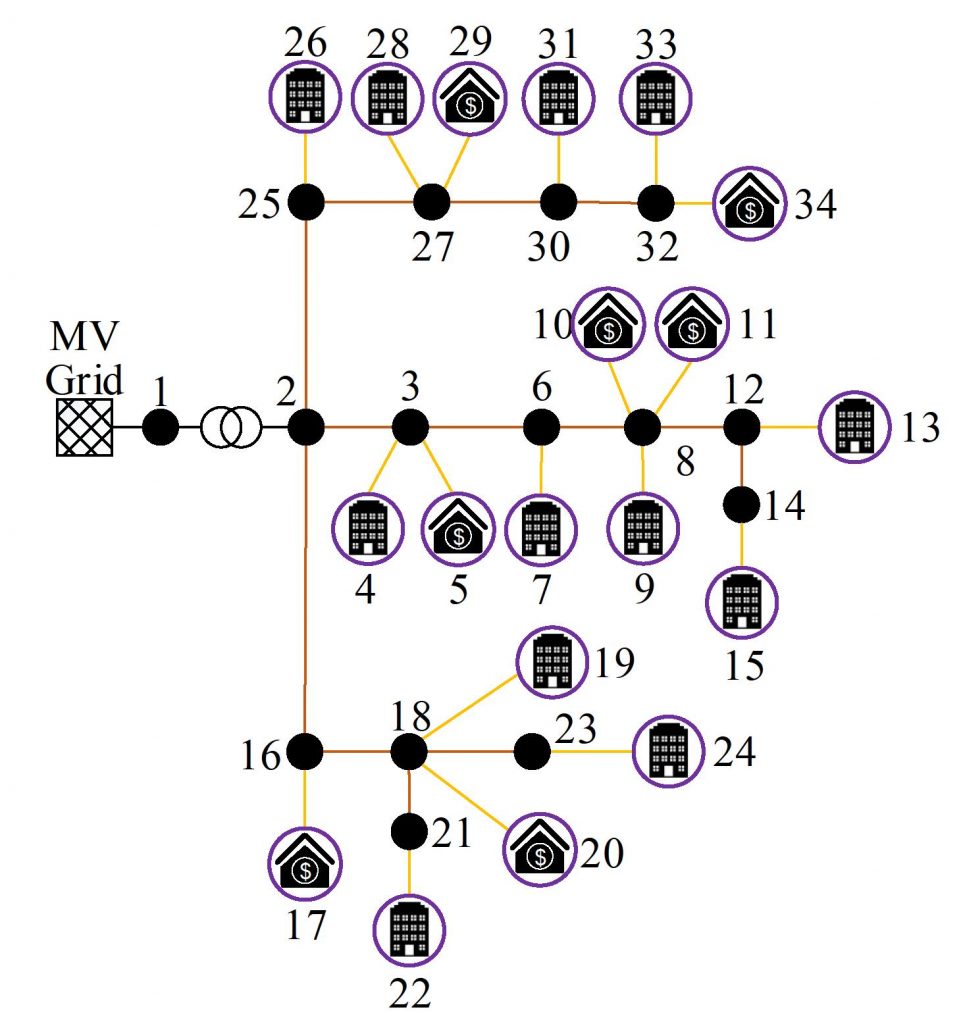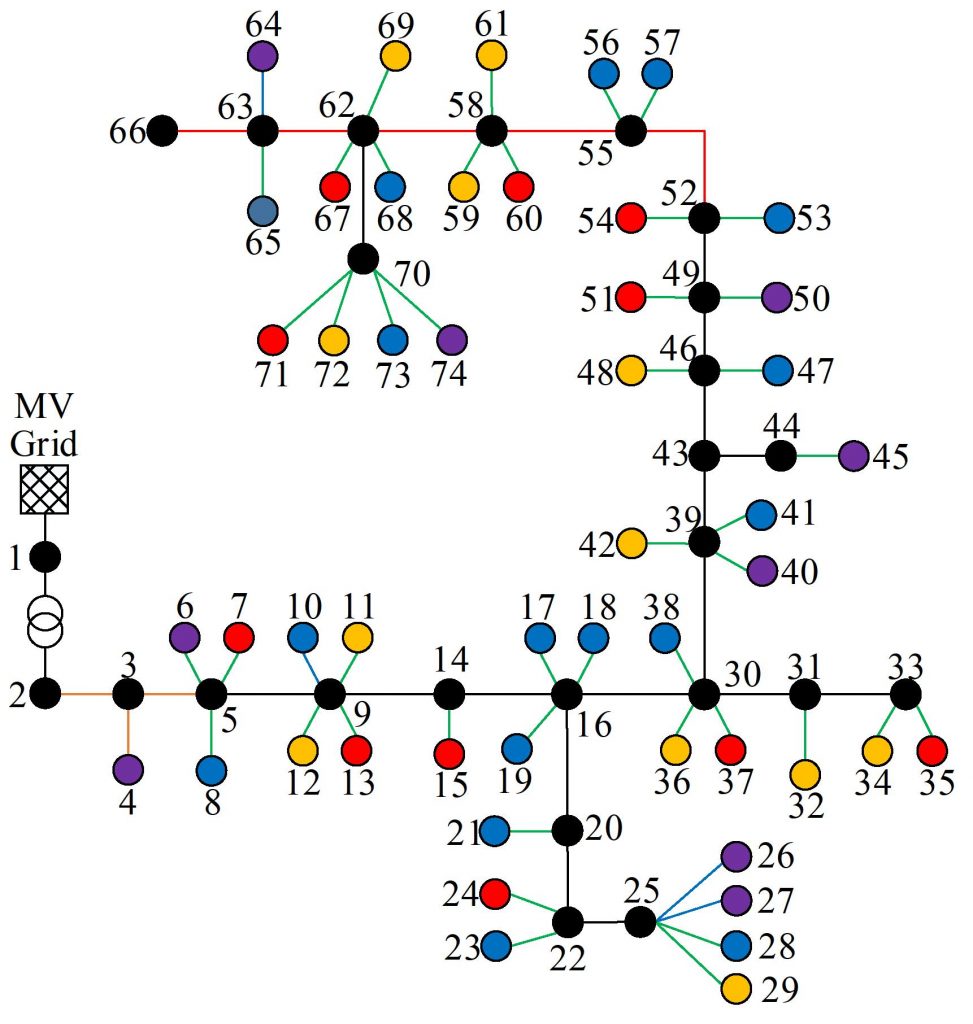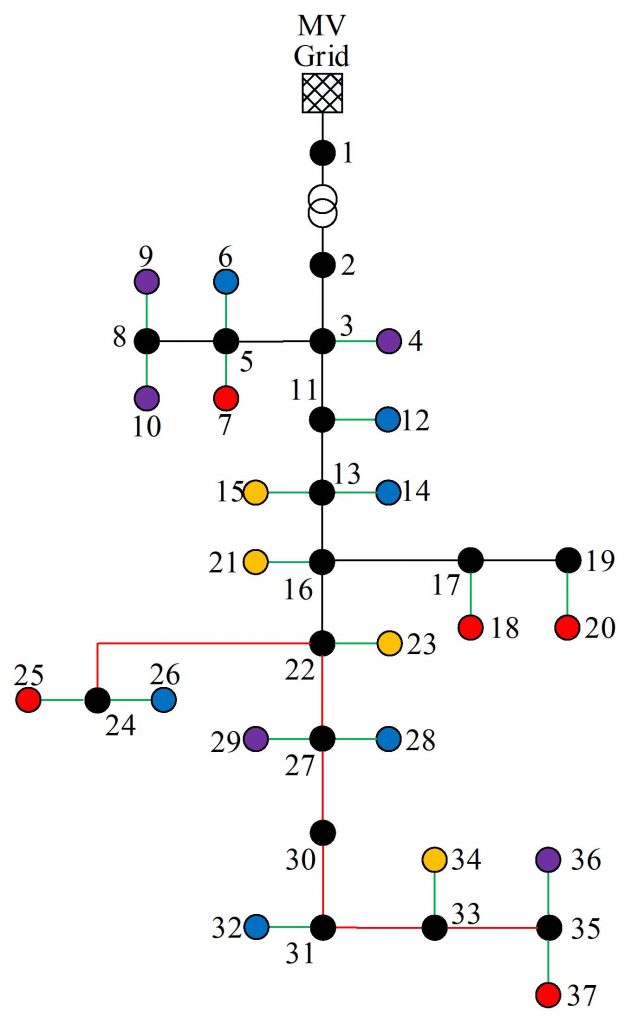Here, the developed representative low voltage test systems (urban, sub-urban, and rural) along with a complete documentation are fully provided.
Urban LV feeder
The urban feeder is characterized by a high energy consumption density, relatively short line lengths, a ground mounted distribution transformer with several outgoing laterals and a supply of energy to customers through underground cables. Its load mixture typically consists of residential apartment complexes, commercial/retail stores, and offices. The urban feeder has 3 outgoing laterals servicing in total 12 apartment complexes (10 individual supply points for each apartment complex) and 7 commercial/retail stores. The supply of power is established through 4-wire 3-phase underground cables for both the main feeder lines and the supply lines towards the customers. The overall underground cable length in this feeder is 1.125 km with a highest end-of-feeder distance of 0.265 km.
Files to download: Matlab-Simulink 2019 or newer, OpenDSS.

Sub-urban LV feeder
The distribution transformer in sub-urban systems can either be ground mounted or pole mounted depending on the required feeder capacity. While the load mixture of the considered feeder is pure residential it is common to have sub-urban systems with varying degrees of load mixtures with commercial/retail stores. In total there are 50 residential consumers, of which 10 have a three-phase connection while the remaining 40 are single-phase connected. The total line length is 1.24 km while the highest end-of-feeder distance is approximately 0.5 km.
Files to download: Matlab-Simulink 2019 or newer, OpenDSS.

Rural LV feeder
Because of a low population/energy density a rural system is characterized by larger line lengths when compared to the other types of LV feeders. Typically, the supply of energy from a pole mounted distribution transformer to the consumers is achieved through overhead lines. Because of the larger line lengths, the voltage profile of rural systems is more sensitive to the loading conditions. The load mixture of these feeders is mainly residential. In the rural feeder there are 20 consumers of which 5 are three-phase connected. The total length of the distribution lines in this feeder is 1.81 km with an end-of-feeder distance of 0.94 km.
Files to download: Matlab-Simulink 2019 or newer, OpenDSS.


